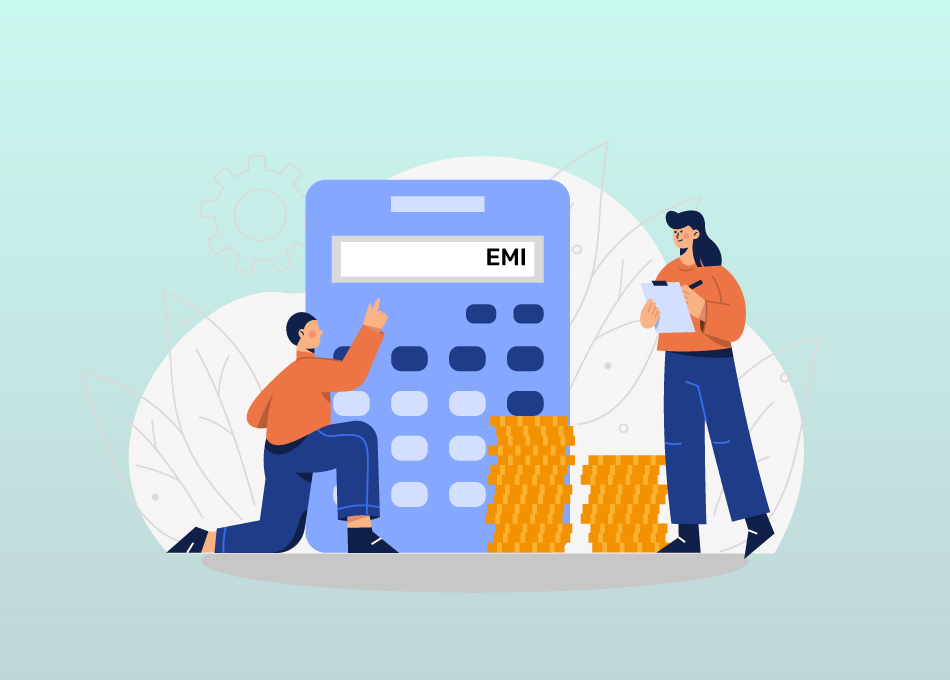In today’s fast-paced world, personal loans have become a popular financial tool to meet various needs, whether it’s for a medical emergency, a wedding, a home renovation, or even a vacation. One of the most convenient ways to secure a personal loan is to apply online for personal loans, where you can get quick approval and disbursal. But the common question most borrowers have is, “How much personal loan can I get?” This article will guide you through the factors that determine the loan amount, how to calculate eligibility, and the role of personal loan calculators.
Factors That Determine Your Loan Amount
When you apply online for personal loans, the amount you can borrow depends on several factors. Lenders evaluate your financial profile before approving the loan amount. The key factors are:
- Income
Your monthly income plays a significant role in determining how much personal loan you can get. Typically, lenders ensure that your monthly loan EMI (Equated Monthly Installment) doesn’t exceed 40-50% of your monthly income. The higher your income, the greater your borrowing potential.
For instance, if your monthly income is Rs. 50,000, and the lender’s policy allows for 40% of income to be allocated toward EMI, your EMI should not exceed Rs. 20,000. Based on this, you can calculate the maximum loan amount you can afford using a personal loan calculator.
- Credit Score
A good credit score, generally above 750, increases your chances of getting a higher loan amount. Lenders use your credit score to assess your creditworthiness and repayment history. If you have a high credit score, you are more likely to be offered a higher loan with favorable terms such as lower interest rates.
- Employment Status and Stability
Lenders prefer borrowers with stable employment and a steady income. If you’ve been employed with the same company for several years or have a stable business, you stand a better chance of getting a higher loan amount. Conversely, frequent job changes or inconsistent income may lower the loan amount offered.
- Existing Debt
Lenders also consider your existing debt obligations when you apply online for personal loans. If you have ongoing loans, such as a home loan or car loan, these will impact your ability to repay a new loan. The lender will factor in your total debt-to-income ratio when determining the loan amount you qualify for.
- Age
Your age also plays a role in the loan amount you are eligible for. Younger borrowers, who have more working years ahead of them, maybe offered larger loans with longer tenures. However, older borrowers nearing retirement may find their loan eligibility limited due to a shorter repayment window.
Using a Personal Loan Calculator
A personal loan calculator is a handy tool that can help you determine how much loan you are eligible for and what your EMIs will look like. These calculators take into account factors like the loan amount, interest rate, and tenure to give you a detailed repayment schedule.
To use a personal loan calculator, follow these steps:
- Enter the Loan Amount: Input the amount you wish to borrow.
- Interest Rate: Enter the interest rate offered by the lender.
- Loan Tenure: Select the loan tenure, usually ranging from 1 to 5 years.
- Calculate: The calculator will then show you the estimated EMI and the total interest payable over the loan tenure.
For example, if you’re applying for a loan of Rs. 5 lakh at an interest rate of 12% for 3 years, a personal loan calculator will show your EMI as approximately Rs. 16,607 per month, and the total interest payable will be Rs. 1,97,852.
This tool is particularly useful when you apply online for personal loans, as it allows you to compare various loan options and choose one that fits your budget.
How Much Can You Borrow?
In India, personal loan amounts generally range from Rs. 50,000 to Rs. 40 lakh, depending on your eligibility. Here’s a breakdown of what to expect based on different salary brackets:
- For Salaried Individuals: Most salaried individuals can get a personal loan of up to Rs. 25-40 lakh, depending on factors such as income, credit score, and job stability.
- For Self-Employed Professionals: Self-employed individuals, such as doctors, chartered accountants, or business owners, may be eligible for personal loans of higher amounts, provided they have a consistent income and strong financial records.
- For Lower Income Groups: Those with monthly incomes below Rs. 20,000 may be eligible for smaller loans ranging from Rs. 50,000 to Rs. 5 lakh, depending on their credit score and debt obligations.
The amount you can borrow is directly influenced by your financial profile, and using a personal loan calculator will help you assess how much you can comfortably repay each month.
Steps to Apply Online for Personal Loans
Applying for a personal loan online is quick and convenient. Here’s a step-by-step guide:
- Visit the Lender’s Website: Choose a reputable bank or financial institution and visit their website.
- Check Eligibility: Use their eligibility checker to see if you qualify for a personal loan based on your income, employment status, and credit score.
- Fill Out the Application Form: Provide your personal and financial details, such as income, employment, and loan amount required.
- Submit Documents: Upload necessary documents like ID proof, income proof (salary slips or bank statements), and address proof.
- Approval and Disbursal: Once your application is processed and approved, the loan amount is credited to your account within a few working days.
Tips for Getting a Higher Loan Amount
If you’re looking to maximize the loan amount when you apply online for personal loans, follow these tips:
- Improve Your Credit Score: Pay off existing debts, ensure timely payments on bills, and maintain a low credit utilization ratio to boost your credit score.
- Choose a Longer Tenure: Opting for a longer loan tenure can reduce your EMI burden, allowing you to borrow more. However, remember that longer tenures may increase the total interest you pay.
- Apply with a Co-Applicant: If you have a spouse or family member with a stable income, applying with a co-applicant can improve your chances of getting a higher loan.
- Provide Accurate Financial Information: Ensure that you provide accurate and complete financial information during the application process. Discrepancies may result in lower loan offers or rejection.
Conclusion
Determining how much personal loan you can get depends on various factors, including your income, credit score, employment stability, and existing debt. By using tools like a personal loan calculator, you can estimate your loan eligibility and monthly repayments, helping you make informed decisions. When you apply online for personal loans, the process is seamless, with quick approvals and disbursals, making it easier to secure funds when you need them. Always be mindful of your repayment capacity and ensure that the loan terms align with your financial goals.



Pingback: A Complete Study of Kerala Financial Code Previous Question Papers - Daily Voice Hub
Pingback: Figuring out the Micro finance collection repository: A Fundamental Device for Monetary Consideration - Daily Voice Hub